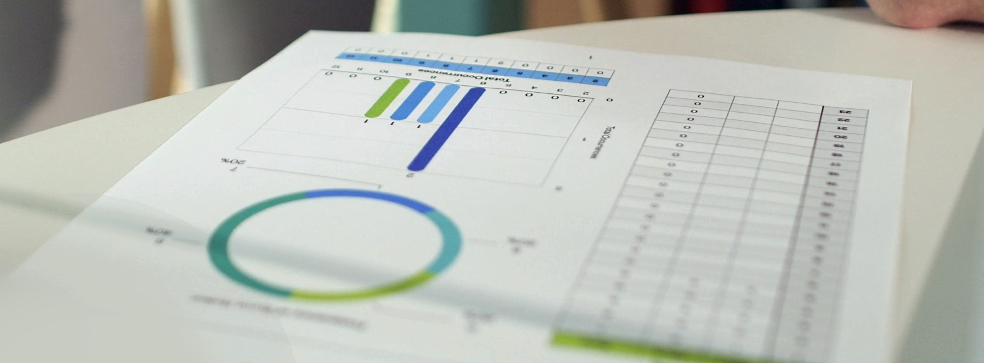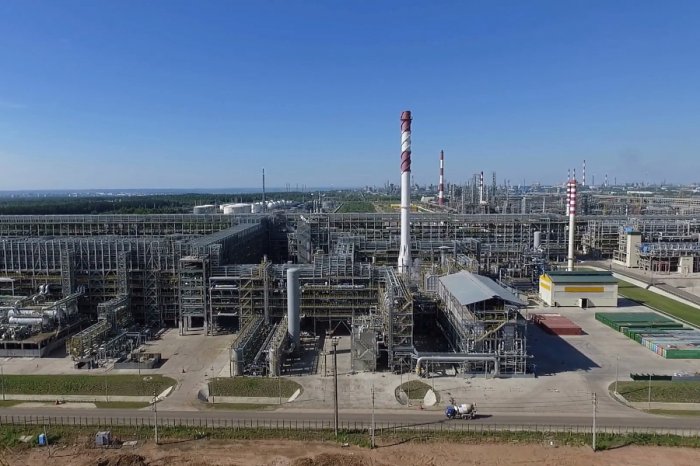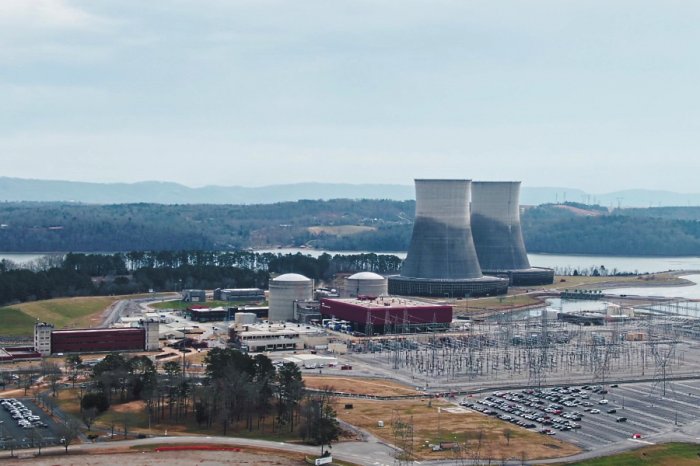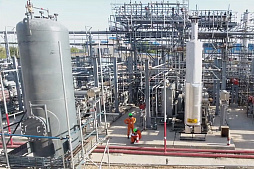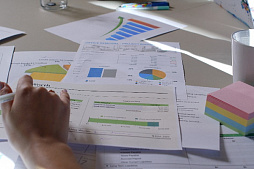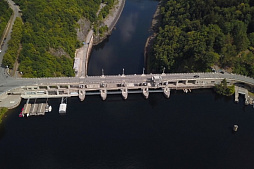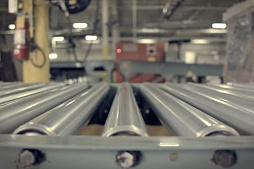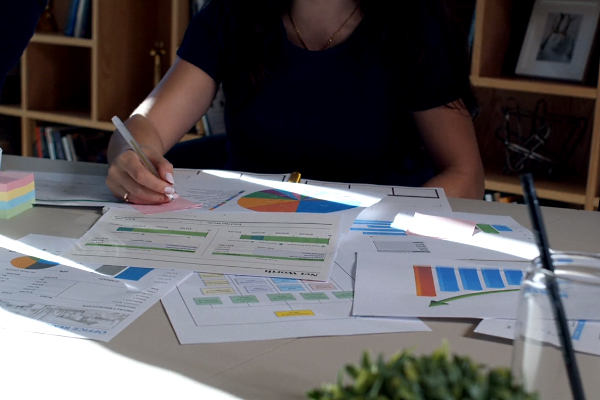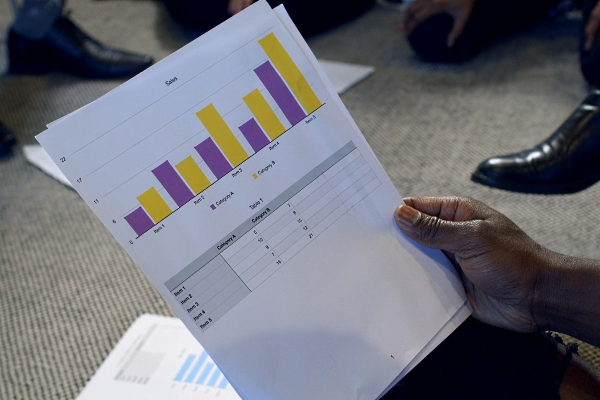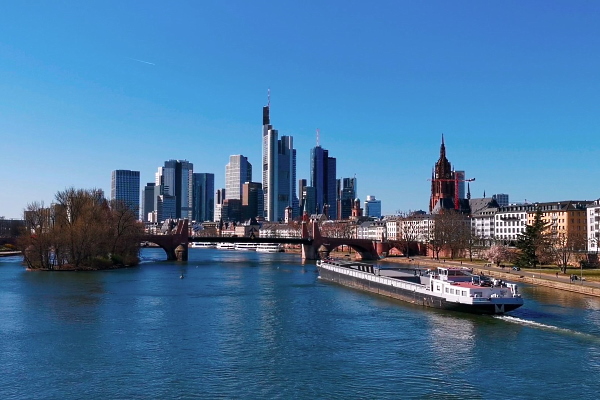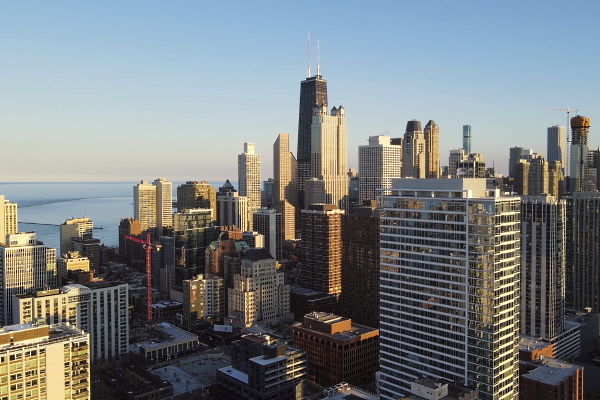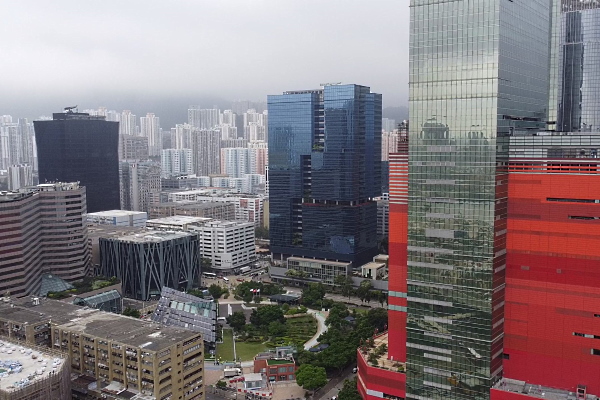To consider an application for financing, fill out the form and send it to us by e-mail along with the project brief, or contact our experts
This type of large business financing allows companies to solve a wide range of tasks, including increasing working capital, acquiring expensive assets (machinery, equipment), as well as building new facilities or other tasks that require significant resources.
This type of financing is also sometimes referred to as a business loan.
Large commercial loans usually require the company to provide the bank with appropriate collateral in the form of land, buildings, or other valuable assets. In some cases, the future cash flows of an investment project may be used to secure debt.
Typically, borrowers must provide detailed financial information to prove their solvency to the bank. The specific requirements of lenders to the borrower vary widely and depend on the loan amount, the financial health of the company, the economic prospects for a specific sector and other factors.
Skywalk Investment Group offers the following services for large businesses:
• Project finance tools for large investments.
• Long-term investment loans up to 90% of the project cost.
• Refinancing of large business loans on flexible terms.
• Financing of R&D activities.
• Loan guarantees.
• Financial modeling.
• Investment consulting.
We have assembled an international team of experts with over 20 years of experience in financing investment projects in Europe and other parts of the world.
If you are looking for cutting-edge financial technology and professional support, please contact SWIG at any time.
Commercial loan in the structure of business financing
The capital needs of a business can be met through various forms of financing such as trade loans, leasing or investment loans offered by banks.Commercial loans are widely used to finance the current needs of companies. Their various forms make it possible to realize the bold plans of entrepreneurs, expand new markets, develop enterprises and increase their competitiveness.
When considering the possibility of financing or expanding the scope of a company's activities with external funds, alternative forms of financing should always be considered as alternatives to loans.
Thanks to this approach, companies can minimize the costs of obtaining certain types of capital and improve financial results.
This depends to some extent on the applicable business valuation methods, potential tax effects, the duration of the funding, and the formalities that must be completed prior to receiving the funds.
Basically, there are two main forms of debt financing of large businesses from external partners. First, financing can be done by shifting the financial burden onto suppliers (trade loan) or by taking a traditional commercial loan from a bank. Both forms of funding are presented below.
A trade loan essentially consists of a deferred payment in exchange for a price increase of a certain percentage, which compensates the supplier for a temporary limitation in the ability to turn over money. This is a very convenient form of short-term financing, but access to trade loans is largely dependent on good business contacts, the reputation of the buyer and mutual trust.
Traditional business loans can be classified into long-term, medium-term and short-term loans.
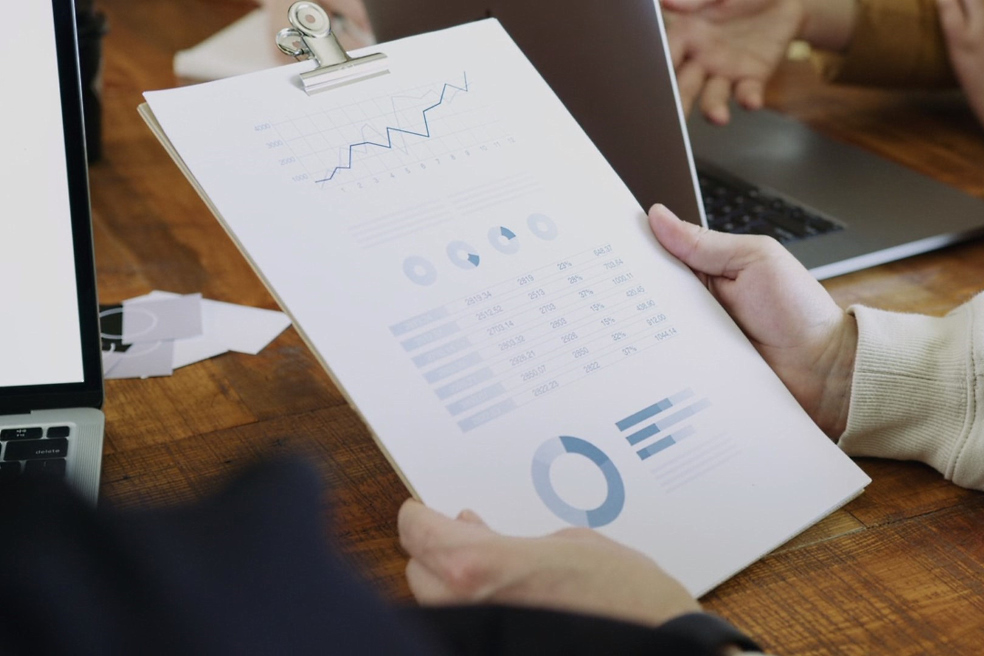
Depending on the purpose, these can be investment loans, working capital loans and other financing options. A distinctive feature of this type of business financing is the supply of capital by licensed financial institutions such as banks, but not trading partners or other counterparties.
Short-term bank loans are often used in a situation of non-fulfillment of contractual obligations by partners, when the company is waiting for the collection of receivables and must pay off obligations for which there are not enough funds. In these cases, consider using a loan (factoring or receivables insurance may also be an alternative). This is especially useful when paying obligations for which financial resources must be secured in the first place, such as taxes and wages for employees.
A business can protect itself against the insolvency of partners with short-term debt instruments.
Overdraft services allow companies to pay off current liabilities.
This type of loan can be used in a short time in the amounts required by the company but up to the limit provided by the bank.
The overdraft limit is usually based on account turnover or company income, but usually banks set the limit based on their internal rules. It can be considered safe when the overdraft limit on the account approaches the average monthly turnover of the company. A loan can be taken out and repaid many times during a period.
Typically, such a loan is offered for 1 year with the possibility of extension. Interest on the loan is calculated for the period and on the amount of actual use. Repayment occurs upon receipt of funds to the company's account in excess of the established limit.
A company that plans to purchase goods and begins cooperation with little-known counterparties will most likely not be able to agree with them on the option of deferred payment. In this case, there is a possibility that the buyer will have to pay for the goods before it is delivered.
In such cases, it is convenient for corporate clients to apply to a bank for a working capital loan, usually intended for the purchase of goods or materials.
The working capital loan can be used to pay invoices issued by the company's suppliers and will be disbursed by the bank upon presentation of invoices. The loan can be used one time or in several tranches. Loan repayment terms can be set conveniently for the entrepreneur (for example, with a grace period, quarterly repayment) and depend on the expected cash flow. The grace period is agreed upon after examining the company's cash flow schedules or determining a date for a facility under construction to reach full production capacity.
The working capital loan limit can be "revolving" similar to an overdraft loan. Such a loan allows companies to carry out loans financed for a longer period. Loan extension depends on the specifics of the business, including the inventory cycle and existing liabilities.
The actual cost of acquiring goods using a working capital loan is the price of the goods and the cost of the loan.
In addition to bank lending, large businesses have other options for attracting external funds. When planning investments, the finance team may consider using leasing instruments. Leasing includes cars, machinery and equipment, production lines, etc. Leasing is usually easier to access than commercial credit. This is its main advantage, but it is offset by a higher cost compared to a loan, as well as numerous restrictions on the use of the leased asset. The potential consequences for the lessee in case of late payment is also important to consider, as they are usually more severe than in the case of late payment of the loan.
Investment loans are used to finance the purchase / creation of fixed assets, including the construction of new production facilities and their modernization.
Unlike overdraft or working capital loans, investment loans are not used to finance current activities, but to recreate or create new fixed assets in the enterprise.
Their purpose is much broader than in the case of leasing, since this type of commercial loan will allow companies to obtain funds for complex long-term projects.
When considering an application for an investment loan, banks can help clients develop a business plan and verify the goals of the company, since after issuing an investment loan, the success of the investment becomes just as important for the bank as it is for the borrower.
For this reason, a professional approach to planning, preparation of project documentation and correct application submission determines the success of project financing.

Cost of a commercial loan and requirements for obtaining funds
The borrowing company must use the loan in accordance with the loan agreement, which specifies the purpose of the loan.In the case of investment and working capital loans, the bank usually transfers funds from the loan to the account of the borrower's counterparties.
Thus, the borrower cannot use the loan for purposes inconsistent with the agreement.
In the case of an overdraft, the borrower has the opportunity to freely use the loan, although the bank has the right to check its use. A commercial loan, actually intended for current payments, can be spent on the purchase of fixed assets. This can be explained by simpler procedures for obtaining an overdraft than for an investment loan.
In general, the use of borrowed funds not in accordance with its purpose is considered dangerous for the company.
In some cases, this may impair liquidity and lead to a situation where the enterprise will not be able to repay the short-term loan at the end of the loan term.
The requirements and restrictions imposed by banks are closely related to the risk they take in issuing loans and the desire to avoid potentially problem loans, the repayment of which would involve additional costs and risks. Commercial loans can be classified as the most risky among the three main groups of loans, and therefore they are usually issued with higher requirements.
Since a huge number of factors affect the success of a business, a large amount of information received by banks from entrepreneurs is used to study each application.
When comparing commercial loan offers of banks, it is important to analyze the real cost of the loan, the minimum period for issuing funds, the collateral required by the bank, and a number of other aspects. Often banks try to attract borrowers by not charging a fee for certain loan-related activities, such as processing a loan application, while charging other fees that will be offset by the advertised waiver of the previous fee.
What determines the cost of a loan?
The base cost of a commercial loan includes an interest rate (variable or fixed). But there are other factors as well. As a rule, the bank's margin is higher, the longer the term of the loan and the worse the financial health of the borrower.
If the loan is issued relatively quickly, with a minimum set of documents and minimum requirements for collateral, the bank usually compensates for the risk with a higher cost of borrowed funds.
This may be a higher interest rate, as well as additional fees.
Depending on the currency in which the loan is issued, banks use different indicators, on the basis of which they set the interest rate on the loan.
In the case of USD loans, interest on the loan may be based on LIBOR (London Interbank Offered Rate) whereas EURIBOR is used for EUR loans.
The interest rate on loans is usually changed by banks on a monthly or quarterly basis. When applying for a loan, the borrower should take into account the possibility of increasing interest rates, which may be the result of, for example, inflation. Loans in the most volatile currencies are usually issued at the highest interest rates in the global financial market.

Often the interest rate is the determining factor when choosing a loan currency.
However, it is important to remember that banks compensate for low interest rates on foreign currency loans by the fact that the money is "taken" at the bid price and repaid at the sale price.
Banks that issue commercial loans in foreign currency bear the risk of loan default due to the appreciation of the exchange rate. They tend to provide loans in foreign currency mainly to companies that settle in this currency (in the case of working capital loans) or for investment projects with higher collateral.
The value of money borrowed from a bank increases significantly due to fees, the most common of which are fees for the following activities:
• Consideration of a loan application.
• Provision of loan funds to the borrower.
• Non-use of the loan.
• Early repayment of the loan.
• Loan conversion.
The financial team should take into account changes in the terms of the loan, including changes in the loan collateral at the request of the borrower.
The cost of the loan is increased by the charges associated with the establishment of collateral. This includes fiscal charges associated with the valuation of collateral and its insurance. In general, the costs of setting up collateral are considered high enough to make loan guarantees or other intangible loan instruments a viable option.
An application for a commercial loan requires an extensive package of documents relating not only to the company, but also to the specific project for which funding is requested. In the loan application, which is the basis for the required documentation, the borrower indicates the type of loan and basic data on business activities (for example, type of products and services produced, suppliers and consumers). The documents submitted when applying for a loan are divided into documents confirming the legal status of the enterprise and financial documents.
Formal documents allow the bank to check how long the company has been operating, what type of activity it is engaged in, as well as to compare the financial results of the company obtained by other business entities operating in the same industry.
In addition, these documents establish the persons who may represent the enterprise.
On the other hand, financial statements are required by the bank to check the financial health of the company. The specific list of required documents depends on the type of financial statements it uses. For large companies, this can be a detailed balance sheet, income statement and cash flow statement for at least the last financial year. In the case of simplified reporting (small business loans), this could be income and expense records and a statement of fixed assets.
The bank will also require tax returns for selected periods to be submitted to the tax office in order to confirm the income and profits received and check their dynamics.
Depending on the length of the loan application period, the bank may also require the potential borrower to provide financial projections and background information that will make these projections reliable.
Unrealistic financial projections, such as a sharp increase in revenues and profits, in a situation where a company has consistently achieved weaker financial results over several years, may decide that the bank will consider the applicant unreliable and refuse to issue a commercial loan.
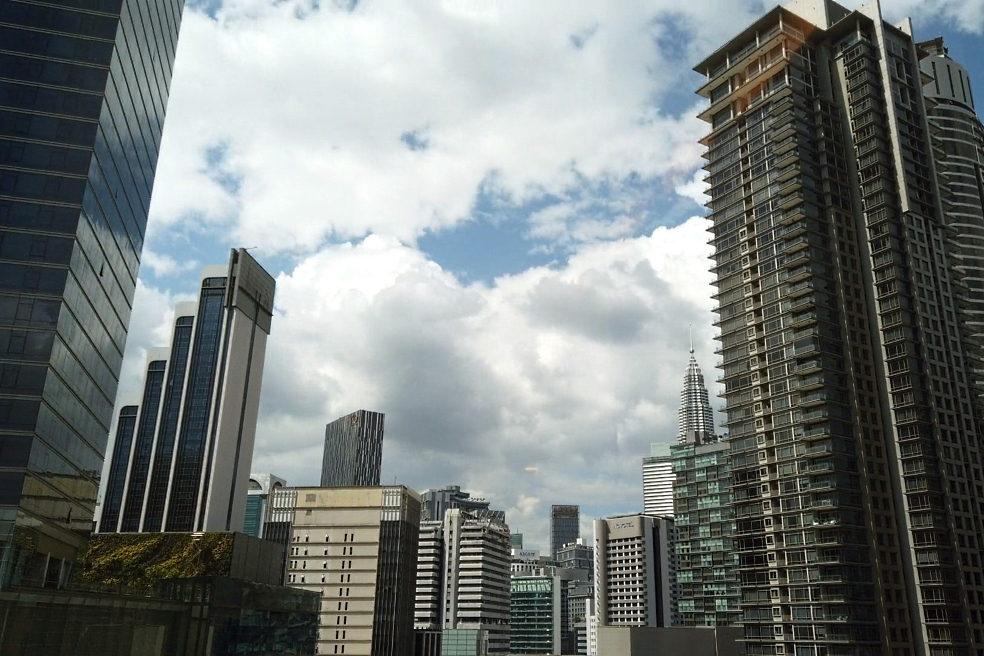
When checking the financial statements, the bank may also request documents that allow a deeper assessment of the financial health of the company.
Invoices received and issued by the company, as well as timely payment of obligations and receipt of receivables, may be subject to spot checks. The bank may also want to review contracts entered into with the loan applicant's counterparties to assess the possible consequences of the borrower's failure to comply with its obligations.
In the case of large investment loans, the bank additionally requires the presentation of investment projects, methods of their financing, terms of implementation, projected cash flows and expected profitability.
All these issues are usually described in a business plan, which is prepared by the company itself or entrusted to a specialized company.
Skywalk Investment Group is a reliable partner in the field of large business financing.
If you are looking for a long-term commercial loan, professional project finance (PF) services, financial modeling or loan guarantees, please contact us.



